CarEdge saved me over 4,500 dollars on a brand new Honda Pilot. I can't say thank you enough.
Price intelligence
Find a wide range of vehicle listings with market insights on new and used listings near you.


Help us personalize your CarEdge experience — it only takes a second.
Your answers help us personalize your CarEdge journey — we’ll follow up with tips and next steps that match your buying timeline.

We recently shared the 2023 models with the biggest price hikes. Now, we’re back with the cars and trucks with the smallest price hikes for the 2023 model year. I must say, there are some surprises here. We’ll start off by taking a look at the price trends for the 25 best-selling models in 2022. Unfortunately, Honda grabs the attention with some of the most anti-consumer price changes in recent memory.
Let’s dive in.
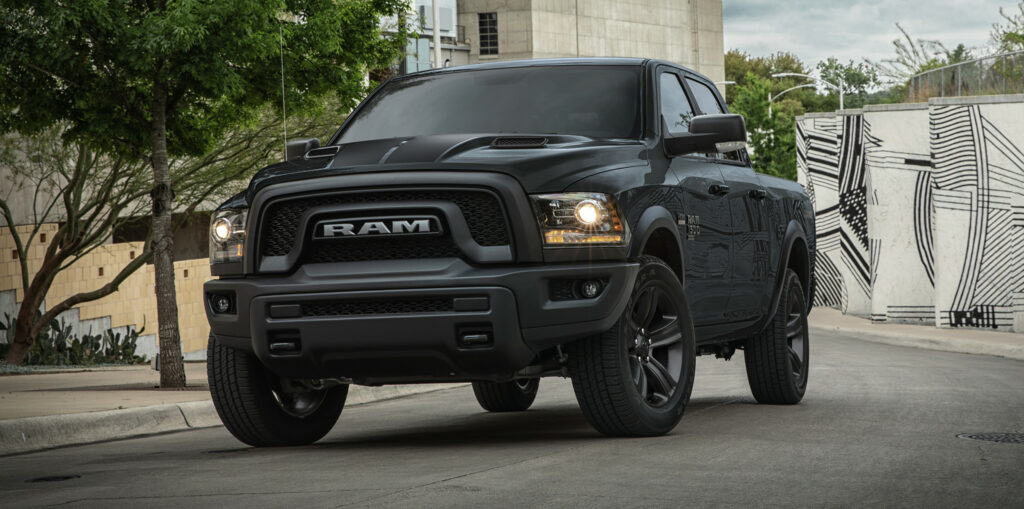
The table below shows 2023 pricing for base models and mid-spec trim options in an effort to provide more useful price comparisons. We’ve included how much the 2023 pricing has changed as a percentage.
Notice that two of the top-selling models actually have price decreases for 2023. And after years of demand outpacing supply, Tesla prices are holding steady. Still, the vast majority have MSRP increases between 3% and 10%.
America’s best-selling vehicle is now a lot more expensive. The 2023 F-150 Lariat, the popular mid-spec truck, is now $8,440 more expensive. The F-150 Limited sees a similarly huge price bump, and now tops out at $85,950. Apparently the F-150 now has Super Duty pricing. The F-150 Lightning went from a $40,000 electric truck, to a $60,000+ EV.
Update January 16th, 2023: Tesla has slashed their prices by up to 20% for some models.
What the heck is going on at Tesla? Overnight they dropped the price of the Model Y Long Range to $52,990, a full $13,000 less than its previous price of $65,990. 🤯 pic.twitter.com/EcZo6wXIiY
— Zach Shefska (@shefska) January 13, 2023
Tesla prices rose 25% from 2021 through early 2022. Now, prices haven’t changed since June 2022. In China, Tesla prices have actually fallen, leading to in-store protests from frustrated customers who bought a few days too soon. The Rear-Wheel Drive Model 3 does now qualify for up to $7,500 in federal tax credits. More on that here.
The Full Story: What’s in Store for Used Tesla Prices in 2023
It’s a frustrating trend, one that we hope Honda fans will speak out against. Honda clearly wants you to spend more in 2023. As with the CR-V, they’ve dropped the base Civic LX, effectively raising the entry-level Civic to $26,145 in 2023. It’s happening to the 2023 CR-V too. Honda eliminated the base LX trim, forcing a nearly $5,000 price increase for the entry-level CR-V.
At least Honda is offering several more options for those wanting a hybrid powertrain in 2023. The Sport, EX-L, Sport-L and Touring trims all come as hybrids. The 2023 Touring Hybrid starts at $38,985, which is $600 LESS than the 2022 Accord Touring.
Our Expectations For Car Price Trends in 2023: Car Prices Fall as Dealers Suffer
The 2023 Ford Escape gets a complete makeover, and with it comes a new trim lineup. That makes price comparisons tricky, but like for like, the 2023 Escape’s pricing remains about the same. In fact, the 2023 Escape ST-Line is $1,000 cheaper than the outgoing 2022 Escape SEL, its closest analog. Higher trims of the 2023 Ford Explorer also see steady prices.
We can’t say the same about other Ford models. The F-150 is seeing prices go up by 7% to 17% in 2023, and the all-electric F-150 Lightning now costs about $20,000 more than it was originally priced.
Toyota Corolla prices have actually gone down in 2023 for the Hybrid LE as Toyota makes way for the new hatchback Corolla. The 2023 Corolla Hatchback SE starts at $24,060 with destination fees.The Camry and Highlander also saw very minor price increases, with prices going up by about 1% across trim levels.
Altima prices nudged up slightly, but that’s no surprise. Nissan’s Altima sales have been on the decline for years now. In 2019, Nissan sold 209,000 Altimas in the U.S. In 2022, Nissan sold 140,000 Altimas in the American market.
New car prices are trending ever higher, even as supply finally catches up to demand. So, where are the best car deals in 2023? Head on over to the used car market for lower prices. Used car prices have been falling for several months, and we expect this trend to continue. Here are some CarEdge resources to get you started on your journey:
The Latest Used Car Price Update (Weekly Updates)

Interest rates are rising, and inflation is at record highs, but deals can still be had when buying a new car. Every month, the team at CarEdge pores over the latest offers from every automaker. The result is a one-stop resource to share the very best new car deals with you.
Not finding what you’re looking for? We’ve included links to each automaker’s website. Check back frequently, as this living page will be updated regularly.
Check out these other CarEdge car buying resources:
The Best Auto Loan Rates Right Now
The Best Lease Deals This Months
These 5 Brands Are Negotiable Right Now
Finance Buick SUVs (Encore, Envision, Enclave) at 3.99% APR for 72 months.
Buick Encore: $179 per month for 24 months with $5,449 due at signing
Buick Envision: $279 per month for 24 months with $3,739 due at signing
Cadillac CT4: $439 per month for 36 months with $3,749 due
Cadillac XT4: $379 per month for 36 months with $3,579 due at signing
See Cadillac listings near you.

Best Chevrolet financing offer:
2.99% APR for 60 months for the Silverado 1500, Colorado and Equinox.
Chevrolet lease deals:
Chevrolet Trailblazer: $259 per month for 24 months with $3,109 due at signing
Chevrolet Blazer: $279 per month for 24 months with $2,369 due at signing
Silverado 1500 Crew Cab 4WD LT: $399 for 36 months with $3,579 due at signing
See details on Chevrolet deals.
Chrysler Pacifica Hybrid: $599 per month for 39 months with $5,499 due at signing
See details on Chrysler deals.

In February, Ford is advertising 3.9% APR for 60 months for select models
Learn more about Ford deals at Ford.com.
Best GMC financing offer:
2.99% APR for the GMC Sierra 1500
3.9% APR for the GMC Terrain
GMC lease offers:
GMC Acadia: $289 per month for 24 months with $2,309 due at signing
GMC Terrain: $279 per month for 24 months with $3,949 due at signing
Best Honda financing offers:
Honda Pilot, Passport, Ridgeline: 1.9% APR for 24 – 48 months
Best Honda lease offers:
Honda Civic: $269 per month for 36 months with $3,399 due
Honda CR-V: $349 per month for 36 months with $4,499 due
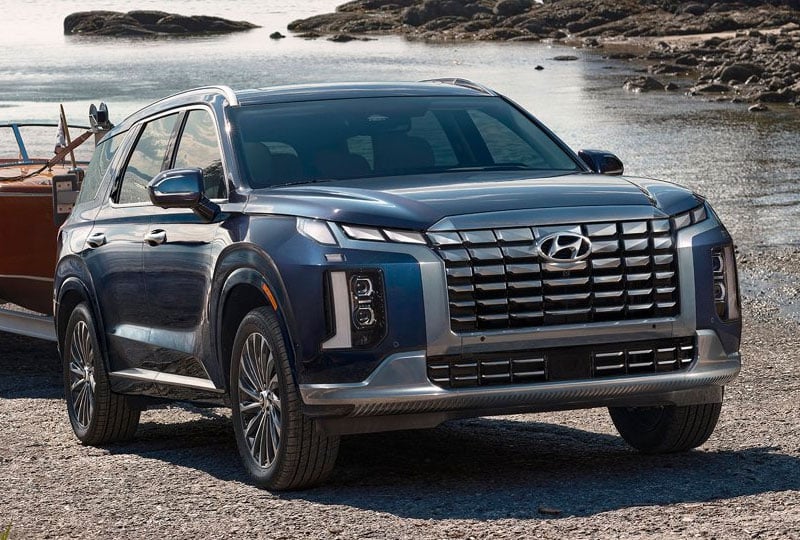
Hyundai lease offers this month are good, but the amount due at signing has increased this month.
Hyundai Venue: $151 per month with $3,281 due
Hyundai Elantra: $219 per month with $3,299 due
Hyundai Kona: $209 per month with $3,999 due
Hyundai Tucson: $279 per month with $3,999 due
Hyundai Santa Fe: $269 per month with $3,999 due
See details on Hyundai lease and finance deals.
Jeep leases are attractive in February.
Jeep Wrangler: $409 per month for 42 months with $5,099 due at signing
Jeep Compass: $347 per month for 42 months with $3,799 due at signing
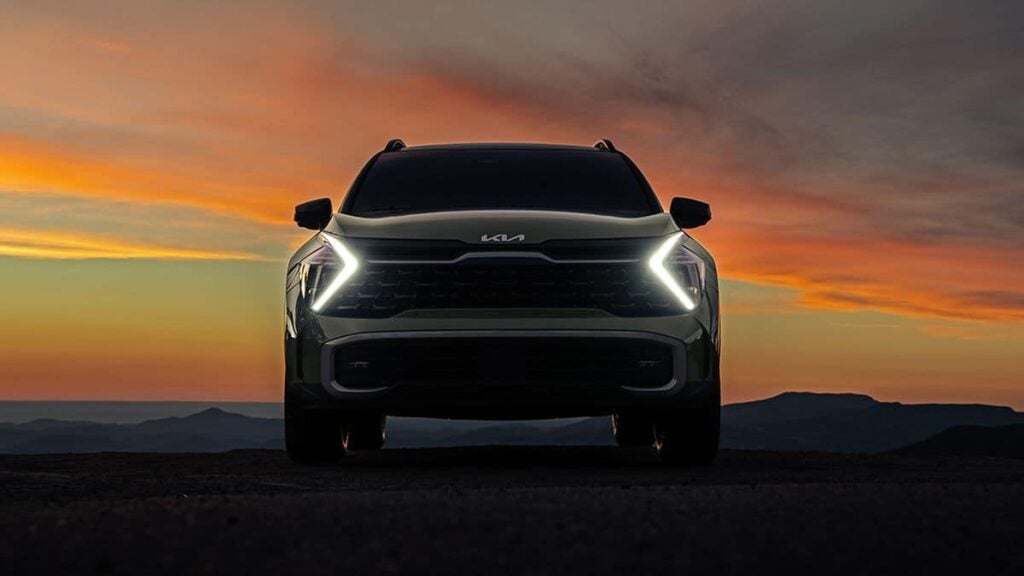
Best Kia financing offer:
2.9% APR for 48 months
Kia Forte
Kia Sorento (2022)
Kia Soul
Best Kia lease offers:
Kia Sportage: $279/month for 36 months with $3,499 due
Kia Seltos: $249/month for 36 months with $3,320 due
See details on Kia deals at Kia.com.
3.49% APR for 48 months for the RX.
$2,000 lease cash for select RX styles.
ES 250 AWD: $509/month for 39 months with $3,999 due
See details on Lexus deals at lexus.com.
Best Mazda financing offer:
2.49% APR for 36 months + NO payments for 90 days
Best Mazda lease offers:
Mazda CX-30: $239 per month for 24 months with $2,999 due at signing.
Mazda CX-5: $299 per month for 33 months with $3,499 due at signing.
See details on Mazda deals at Mazdausa.com.
0.0% APR for 36 months
1.9% APR for 36 months
Nissan Altima: $199 per month for 18 months with $2,309 due
Nissan Leaf: $269 per month for 36 months with $5,259 due
Nissan Rogue (AWD): $299 per month for 36 months with $3,459 due Nissan Murano (FWD): $299/month for 24 months with $2,099 due
Learn more about Nissan deals here.

4.9% APR for 72 months and no payments for 90 days for the Ram 1500 and Ram 2500
$4,000 cash allowance for Ram 1500
Lease: Ram 1500: $309/month for 42 months, $5,499 due
Learn more about Ram deals at Ramtrucks.com.
Best Subaru financing offers:
2.9% – 3.9% APR for 48 months for these models:
The best Subaru leases:
Subaru Outback: $345 per month for 36 months with $3,515 due
Subaru Ascent: $359 per month for 36 months with $3,259 due
Best Toyota financing offers:
2.99% APR for 60 months
3.49% APR for 48 months
Toyota Corolla Cross: $331 per month for 39 months with $2,976 due
Toyota RAV4: $413 per month for 36 months with $3,063 due
Toyota Highlander: $393 per month for 39 months with $4,053 due
Learn more about Toyota deals here.
With interest rates rising and inflation putting pressure on automakers and their dealer networks, the only thing that could bring better new car deals would be plummeting demand. We’ve seen signs of weakening demand and higher new car inventory, but nothing considered drastic. Expect auto loan interest rates to climb in 2023. The best car deals in February won’t last.
These are the 5 car brands you CAN negotiate right now!
Thinking about factory ordering? These are the latest wait times our community is reporting.
These are the most marked-up new cars in 2022
Looking for something else? Visit our blog, or consult 1:1 with a real CarEdge Auto Expert to get customized help with your car deal. It could save you thousands!

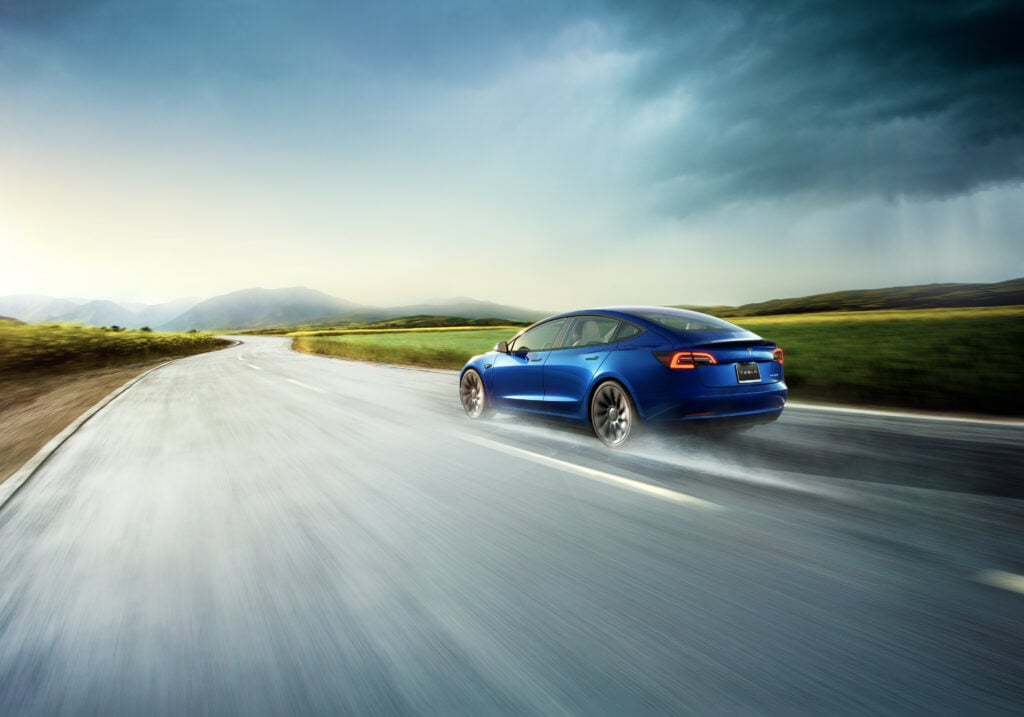
Until charging stations are commonplace, owning an electric vehicle will require more planning and preparation than one would expect for a day’s drive. Range is the new MPG, however real-world range isn’t easy to pin down. When the U.S. EPA provides official range ratings, the figures are based on vehicles driving in controlled environments on a predetermined track. EV ownership is full of nuances, and one of the greatest is the affect of weather on range. Let’s explore how electric vehicles perform in cold weather, hot weather, rain and wind.
Cold weather reduces EV range, but how much depends on how toasty you keep the cabin. Sub-freezing temperatures reduce range by between 12% and 30%, but that’s without the climate control on to warm the cabin. Data from AAA found that once the heater is turned on, EV range can drop by as much as 41%. Some real-world tests have found range losses closer to 50% with below-zero temperatures. That’s not good if you travel long distances across the northern states or the Interior West. More on specific impacts below.
Yes, hot weather does reduce EV range. According to research conducted by AAA, hot temperatures don’t have quite as great of an impact as cold temperatures, but it’s still noticeable. In temperatures of 95 degrees Fahrenheit and the air conditioning on, driving range decreases by 17% on average.
A 17% drop in range would mean that a Model Y normally rated for 330 miles on a charge would get closer to 273 miles. Not too big of a deal. For electric vehicles with less EPA-rated range, it matters more. The standard range 2022 Nissan Leaf normally gets 150 miles on a charge, but that would drop to 124 miles in 95-degree weather. Ouch.
Rain, snow and anything else falling from the sky does lower EV range. Why? It creates drag, and EV efficiency is all about aerodynamics. The heavier the rain, the greater the impact on range, even if temperatures are perfect for battery performance.
Speaking of which, what is the ideal temperature for electric vehicle battery performance? Geotab’s analysis of data from 4,200 EVs found that 70 degrees Fahrenheit (21.5 Celsius) is ideal for battery performance. That’s not only perfect for maximum range, it’s great weather all around. Learn more in Geotab’s full report.
Similarly, wind’s impacts on electric vehicle range have to do with drag. Drag is in essence aerodynamic friction. Your fancy new electric car can’t slide through the air so efficiently with friction working on it.
Wind can work against you or for you. With a steady tailwind pushing you along, it’s common to exceed range expectations even on the highway. When there’s a substantial headwind, range drops, and sometimes by quite a lot. The impacts of wind on EV range are much more noticeable at highway speeds. It’s possible to gain or lose up to 20% of expected range depending on wind direction.
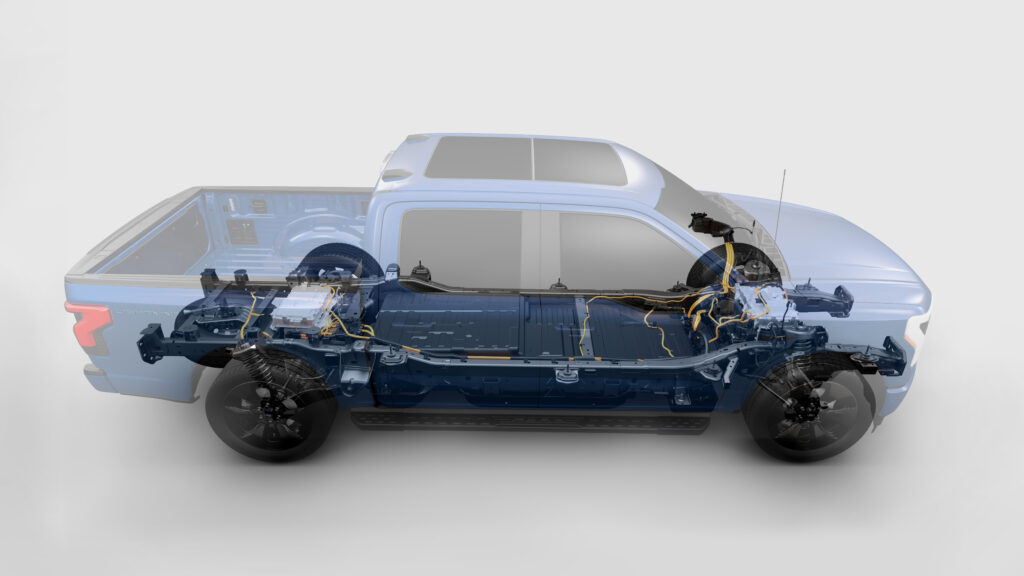
Temperature impacts battery performance differently depending on battery type and overall vehicle engineering. Features such as a heat pump, advanced battery preconditioning and even heated seats are just some of the many ways that engineers can do their best to optimize EV performance in suboptimal weather.
EV data specialists at Recurrent looked at data from all of the popular electric vehicle models. They found that EV range in hot and cold weather varies widely from one make and model to another.
Here’s how some of America’s most popular electric vehicles are affected by cold weather and summer heat.
| Make | Model | Rated Range | Real-World Range (70 deg F) | Cold Weather Range Loss |
|---|---|---|---|---|
| Tesla | Model 3 | 353 miles | 339 miles | 335 miles (-5% from rated range) |
| Tesla | Model Y | 330 miles | 320 miles | 323 miles (-2% from rated range) |
| Tesla | Model S | 405 miles | 397 miles | 380 miles (-6% from rated range) |
| Tesla | Model X | 351 miles | 326 miles | 326 miles (-7% from rated range) |
| Ford | Mustang Mach-E | 305 miles | 284 miles | 198 miles (-35% from rated range) |
| Chevrolet | Bolt | 259 miles | 254 miles | 171 miles (-34% from rated range) |
| Nissan | Leaf | 226 miles | 237 miles | 205 miles (-9% from rated range) |
| Hyundai | Kona | 258 miles | 288 miles | 240 miles (-7% from rated range) |
| Audi | e-tron | 222 miles | 224 miles | 206 miles (-7% from rated range) |
For a full breakdown of Recurrent’s findings, check out their 2021 report here.
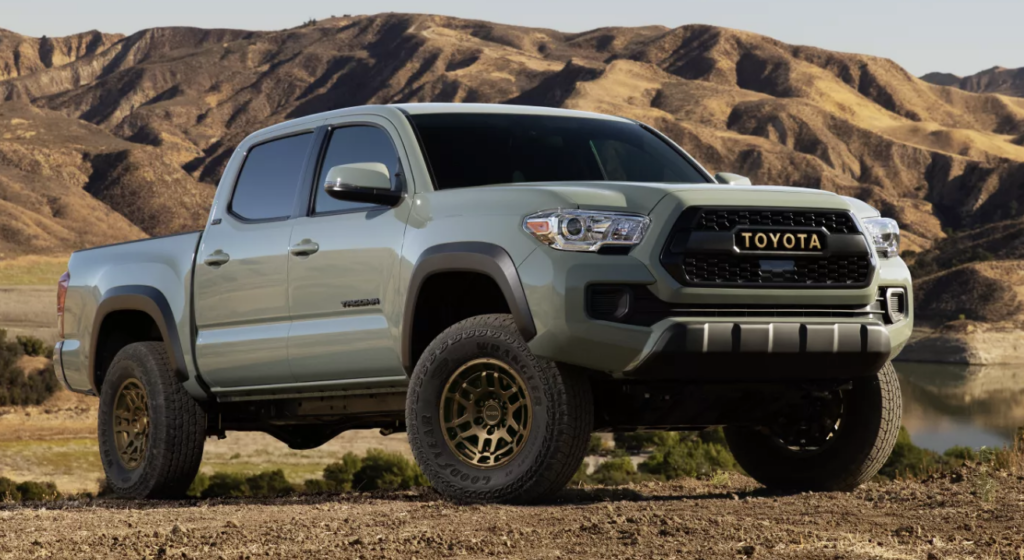
The U.S. Department of Energy says that vehicles powered by traditional internal combustion engines (ICE) also suffer efficiency losses as a result of hot and cold weather. ICE vehicles are especially impacted by hot weather due to air conditioning power requirements. The Department of Energy estimates that ICE vehicles lose about 25% of their typical fuel economy when operating with air conditioning on high settings.
One major difference between EVs and ICE vehicles is the affect of cold weather. Electric vehicles use quite a bit of energy to run the heater, whereas ICE vehicles redirect heat generated by the engine and therefore avoid significant effects on efficiency.
Although EV charging stations are becoming commonplace around major cities, many interstate highways have sparse charging infrastructure. Until charging stations are more reliable and easier to find, driving an EV in cold and hot weather will complicate EV ownership and delay EV adoption. A national charging network is on the way, and public fast-charging networks are growing quickly. With EV market share soaring every month, it’s imperative that we find solutions to this seasonal challenge that affects millions.
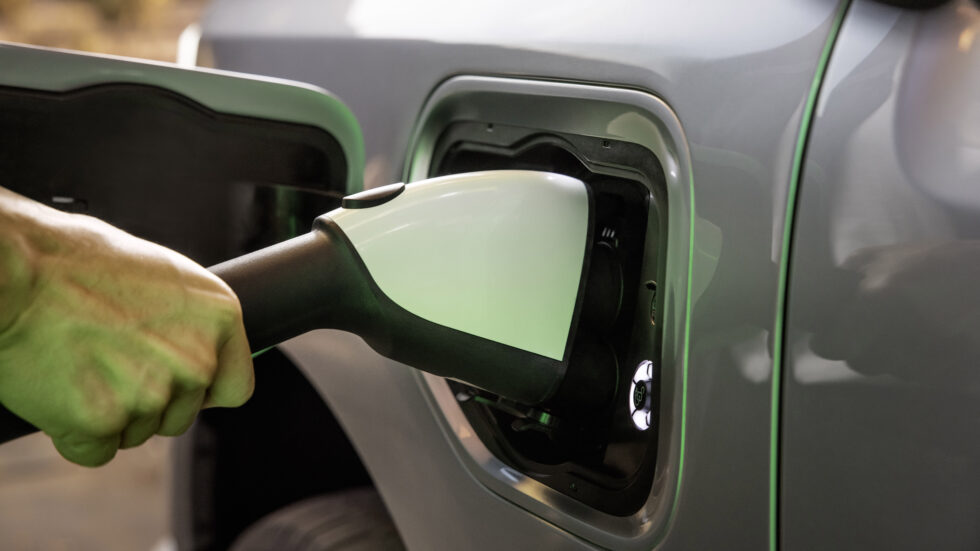
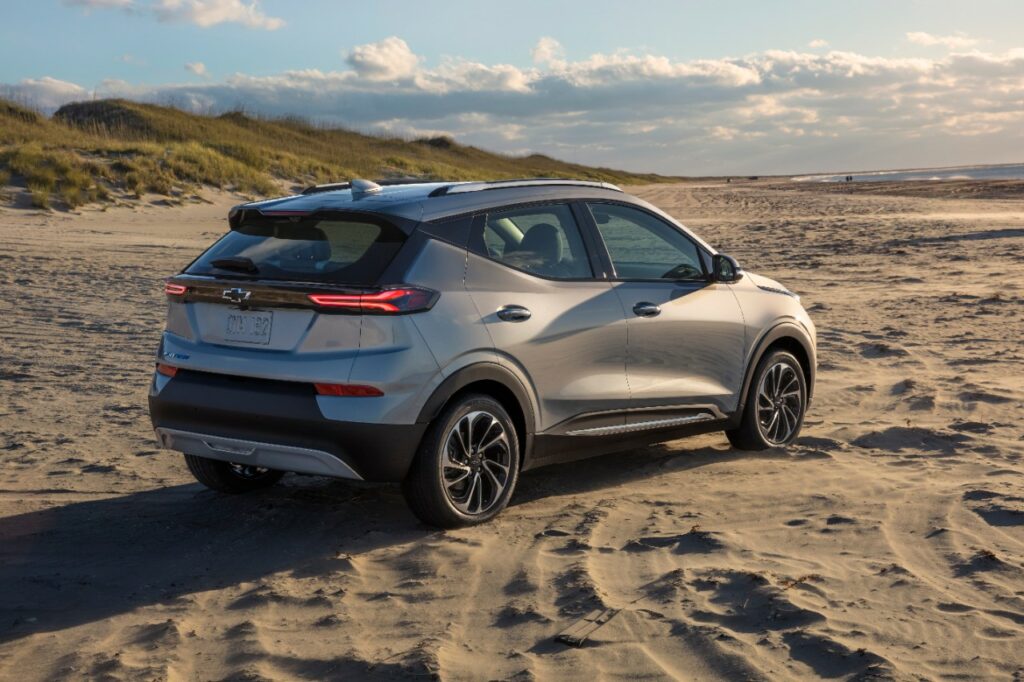
If you’re in the market for an affordable electric vehicle, you’ve likely already arrived at the realization that ‘affordable’ doesn’t mean cheap in 2022. In fact, our own CarEdge list of the best affordable electric cars features one car (the Tesla Model 3) that now starts just shy of $50,000. Are there any truly cheap electric cars available today? You may be surprised with what we found.
After earlier rumors suggested that the Nissan LEAF was to be discontinued, a Nissan executive recently stated that the LEAF is here to stay. That’s GREAT news for EV affordability.
We must point out that General Motors decided to slash the price of the LEAF’s competitor, the Chevy Bolt, to steal the title of ‘cheapest EV in America.’ More on that below.
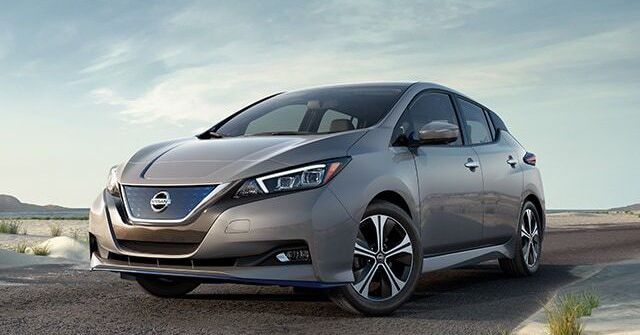
Price: Starting at $27,400
Range: 150 to 226 miles, depending on battery size
Charging Speed: Either 50 kW or 100 kW speeds, depending on battery
Tax credit: It qualifies!
Available at dealers now: See who has inventory at CarEdge Car Search: Nissan Leaf
Tesla is the face of electric cars today, but for years it was the Nissan Leaf at center stage. When Nissan brought the Leaf to market in 2010, it was a short-ranged novelty that somehow began to catch on. With just 73 miles of range on a good day, the first iteration of the Leaf was a bug-eyed appliance good for around town, but not much else.
Over a decade later, and the 2022 Nissan Leaf is a lot better than the first. However, it’s still a budget vehicle, and you get what you pay for. Still, it’s a great entry point into EVs for many. The Leaf now has enough range to make regional travel realistic, but charging speeds have unfortunately remained too slow to make it easy. If you’re eager to get into an electric car for under $30,000, you’ll surely want to check out the 2022 Nissan Leaf.

Price: Starting at $26,595
Range: 259 miles
Charging Speed: 55 kW speeds (adds 100 miles in 30 minutes of charging)
Tax Credit: The Bolt no longer qualifies for the federal EV tax credit, but state incentives may apply
The 2023 Chevy Bolt is the cheapest electric car today. It is available at dealers nationwide, as long as the mandatory recall fixes have been completed. See who has inventory at CarEdge Car Search: Chevrolet Bolt and Bolt EUV
General Motors has sold over 100,000 Chevrolet Bolt EVs since launching the subcompact crossover in 2016. In 2021, the Bolt gained a new sibling: the larger Bolt EUV. Shortly after the Bolt EUV joined the show, several Bolt battery fires spurred a very urgent recall into action. When all was said and done, battery supplier LG Chem was found to be responsible for the Bolt battery fires, and agreed to pay General Motors $2 billion in damages.
Fast forward to 2022, and most Chevrolet Bolt’s (all for sale) have received new battery packs. The Bolt is a GREAT deal now that it’s fixed. If you’re never in a rush on road trips (or just plan to use the car around town), the 2022 Chevrolet Bolt is worth a look. It charges painfully slow, but hey, it is the cheapest electric car today.
If you check out used Bolts, request official documentation showing that all recall work was completed. The Bolt will be eligible for the new EV tax credit here in the United States, but only after 1/1/2023. See our full guide to EV tax credits for more info.
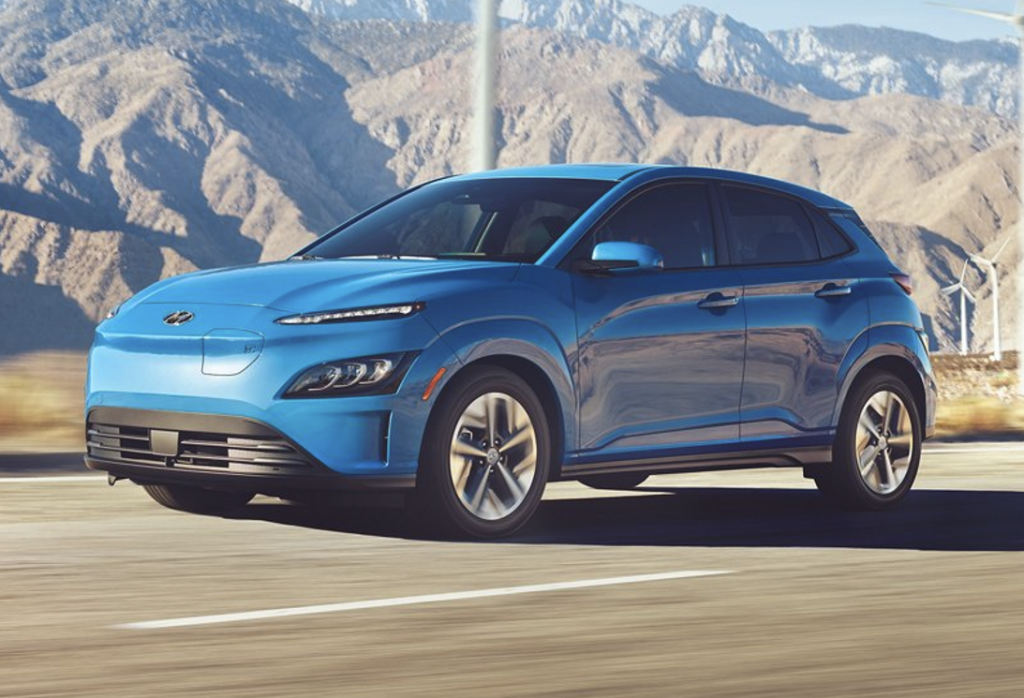
Price: Starting at $34,000
Range: 258 miles
Charging Speed: 100 kW speeds (180 miles added in 47 minutes)
Tax Credit: It qualifies!
Available at dealers nationwide. See who has inventory at CarEdge Car Search: Hyundai Kona EV
The 2022 Hyundai Kona EV is no Tesla, but it has decent range and room to fit most lifestyles. Plus, it’s really cheap AND still qualifies for the $7,500 federal tax credit.
For just $34,000 before incentives, you can become the owner of the original Hyundai EV. This front-wheel drive subcompact crossover gets 258 miles on the charge, exceptional range for a budget EV. Some owners get over 275 miles on a single charge. The Limited trim, top-of-the-line option comes in at $42,500.
If you plug in at home, charging to 100% from a 240-volt dryer outlet will only take you about 9 hours from 10% state of charge. That will get you a full battery overnight while you’re sleeping. At a fast charger, the Kona is behind the competition. In 47 minutes, the Kona Electric charges from 10% to 80% capacity.
The all-new Hyundai IONIQ 5 has stolen the show with more range, MUCH faster charging, and retro looks, but it starts closer to $45,000 with destination and availability is very limited. For those who are willing to give up a few luxuries, the Hyundai Kona EV is a solid choice.
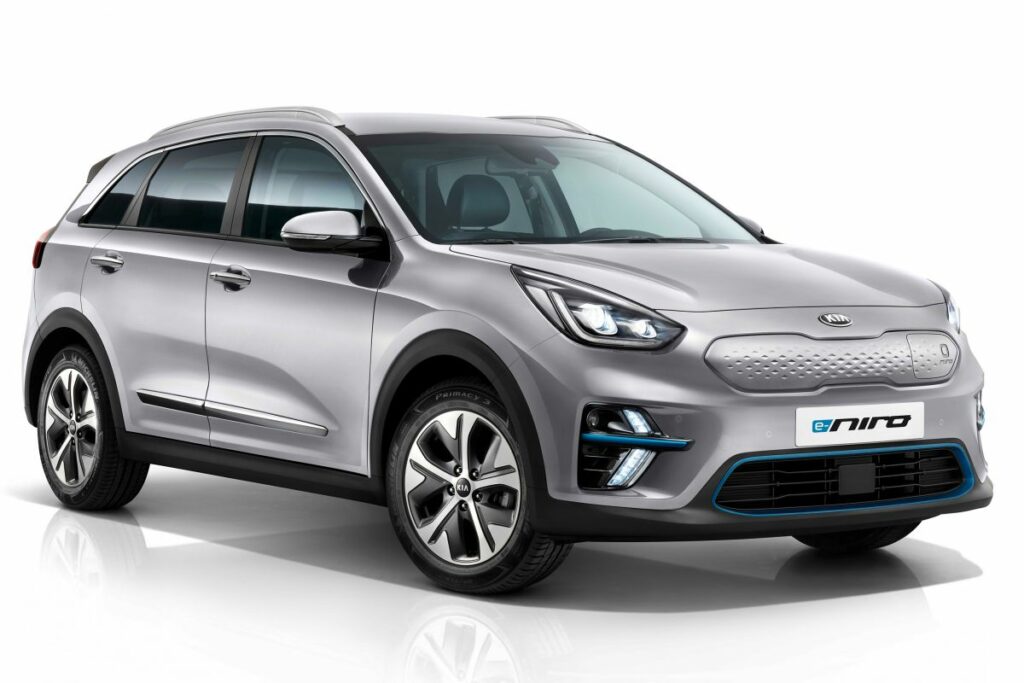
Price: Starting at $39,990
Range: 239 miles
Charging Speed: 100 kW at a DC fast charger (adds 100 miles of range in about 30 minutes)
Tax Credit: It qualifies!
Available at dealers nationwide. See who has inventory at CarEdge Car Search: Kia Niro EV
The Kia Niro electric version is the sibling to the aforementioned Hyundai Kona EV. Both source their power from a 64 kilowatt-hour battery, which is a tad smaller than more expensive electric cars. The Niro EV can charge at up to 100 kilowatt speeds at a fast charger. At least that’s better than the Nissan LEAF and Chevy Bolt.
The Niro EV’s back seat is slightly more spacious than the Kona’s, so it’s more popular with families and those with large pets. There’s also a plug-in hybrid version. For just a few thousand dollars more, keep in mind that you could check out the base trims of the newer Kia EV6, Hyundai IONIQ 5 and Volkswagen ID.4.
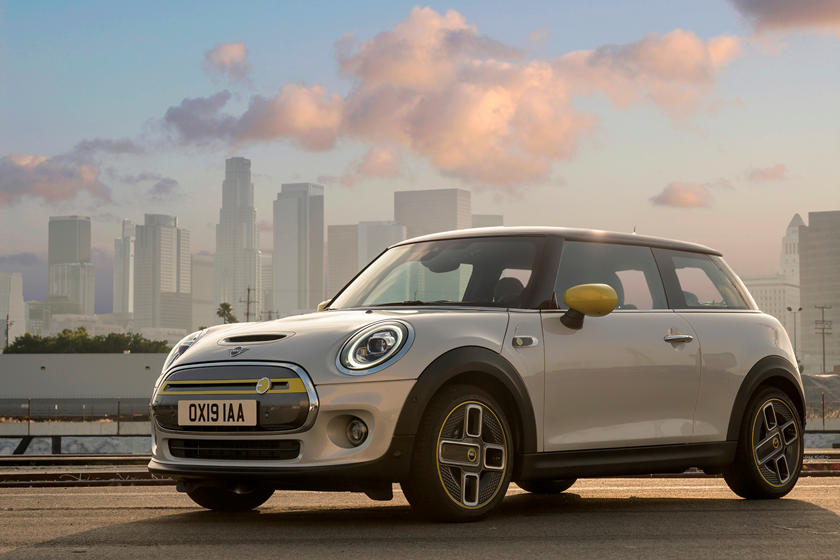
Price: $30,750
Range: 114 miles
Charging Speed: 50 kW speeds (about 90 miles of range in 36 minutes)
Tax Credit: It qualifies!
Available at select dealers nationwide. See who has inventory at CarEdge Car Search: MINI Cooper Electric
For just over $30,000, you can own an electric Mini. It’s practically a luxury golf cart! Jokes aside, it’s not a bad deal IF you don’t plan to go very far. With 114 miles of EPA-rated range, it’s a zippy way to scoot around town.
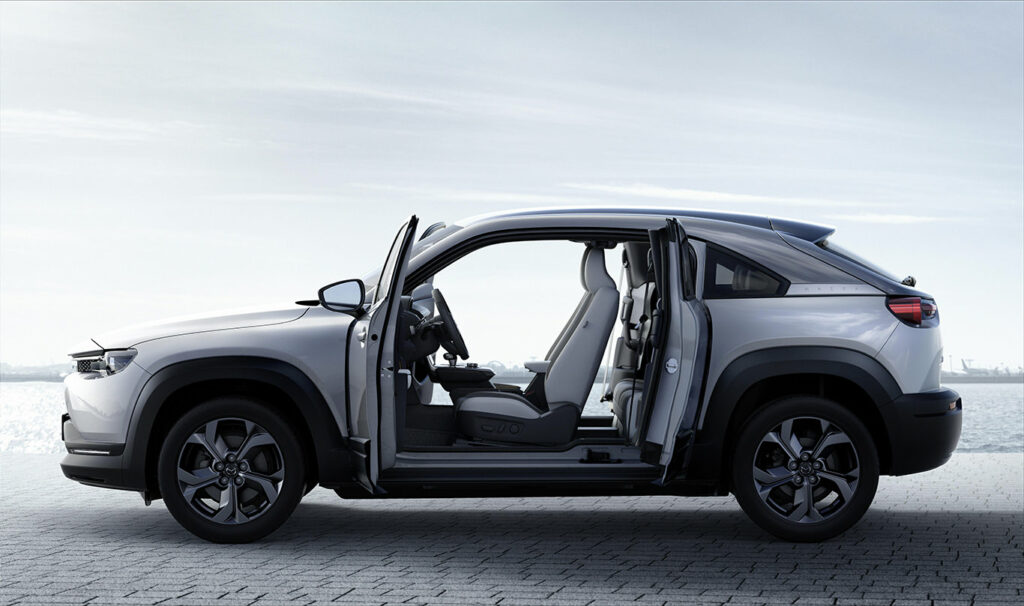
Price: $34,695
Range: 100 miles
Available in California to those who don’t travel much. Check it out if you must at CarEdge Car Search: Mazda MX-30
Why didn’t I include Mazda’s first fully-electric vehicle on this list? It’s a brand-new model, yet it only gets 100 miles of range on a charge. That, and the fact that it is only sold in California as a regulatory compliance vehicle for now. Come on, Mazda! That’s not enough range to safely make it across Los Angeles!
An electric car under $35,000? Sounds like science fiction, but as you can see, a few can be had for what used to be considered average car prices. Most of these cheap electric cars don’t have the best range, the fastest charging or the need for speed, but they won’t drain the bank like a Tesla will. Let me know which cheap EVs you’re checking out in 2022.
Some parting advice: consider all options, and test drive as many electric vehicles as you can. You’ll be amazed at what’s out there, and even more amazed at what’s to come.
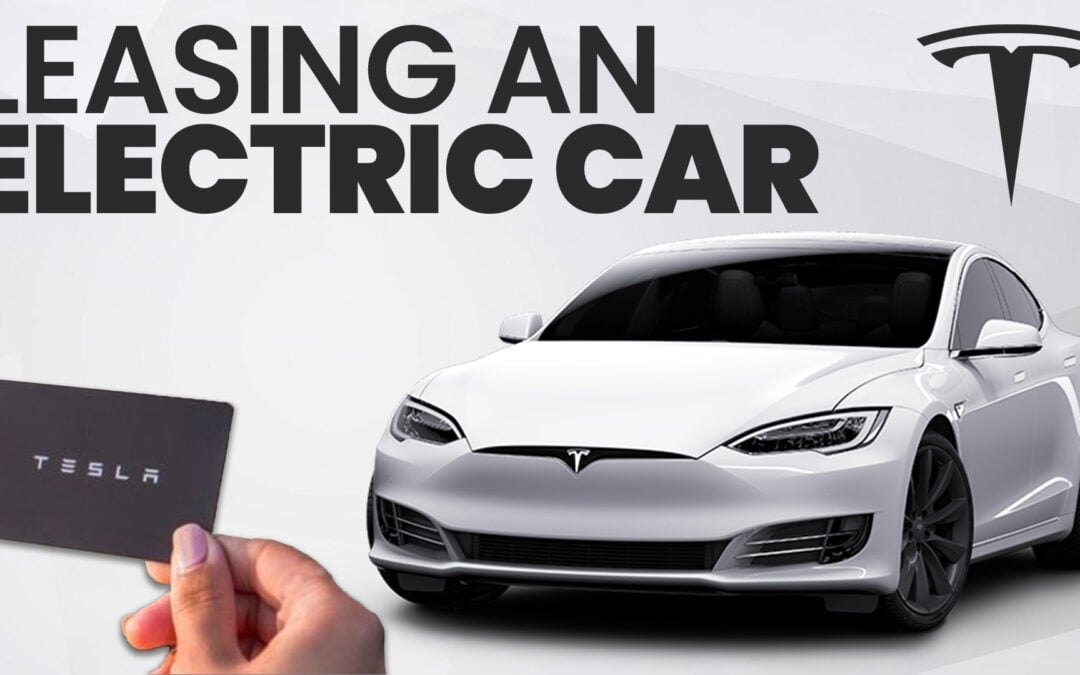
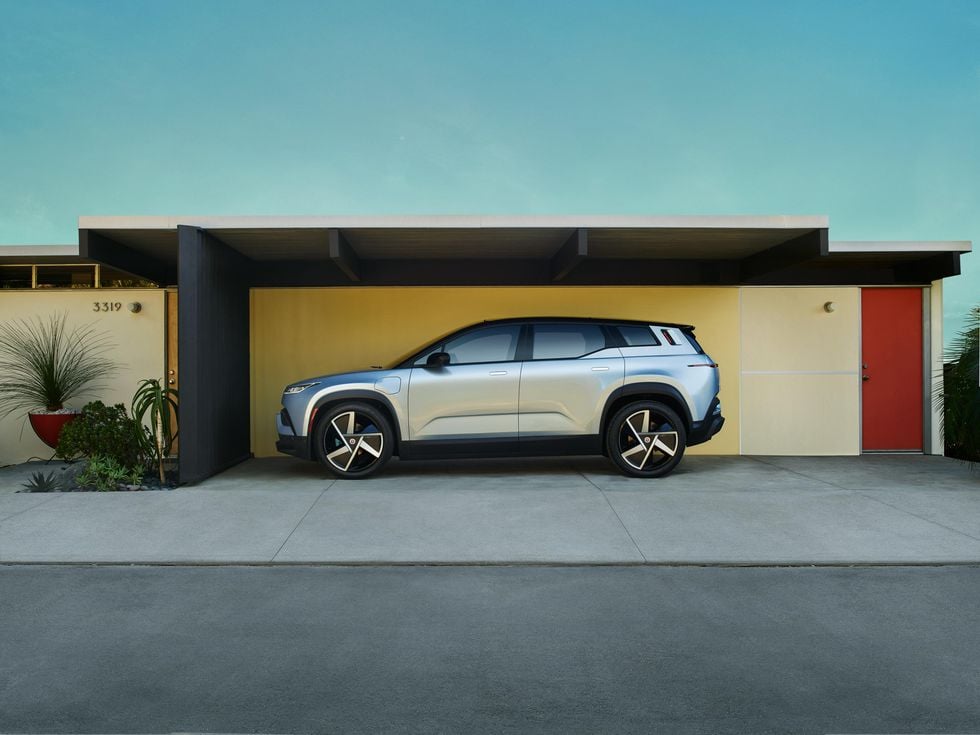
We recently shared five affordable electric cars to buy in 2022. “Affordable” only goes so far in today’s auto market, and not a single top pick lists for under $35,000. With battery and charging advancements around every corner, leasing is a great way to keep up with the pace of technology without having to purchase a new car. All things considered, these are the 5 best electric cars to lease in 2022.

The often overlooked Hyundai Kona EV was the Korean automaker’s electric flagship years before the fancy new IONIQ 5 stole the show. When it comes down to numbers, the Kona EV is a great value. We featured it in our recent CarEdge list of the best affordable electric cars.
This front-wheel drive subcompact crossover gets 258 miles on the charge, exceptional range for a budget EV. Some owners get over 275 miles on a single charge. If you plug in at home, charging to 100% from a 240-volt dryer outlet will only take you about 9 hours from 10% state of charge. That will get you a full battery overnight while you’re sleeping. At a DC fast charger, the Kona is behind the competition. In 47 minutes, the Kona Electric charges from 10% to 80% capacity. For perspective, the new Hyundai IONIQ 5 can do the same in 18 minutes, but it costs nearly twice as much.
You can lease the Hyundai Kona EV for just $259 /mo with $3,699 due at lease signing for 36 months and 10,000 miles of driving allowance per year. If this is your price range, the Chevy Bolt, Nissan Leaf, and the Kona’s cousin the e-Niro are the only other options. You can’t go wrong with the Kona at this price point.
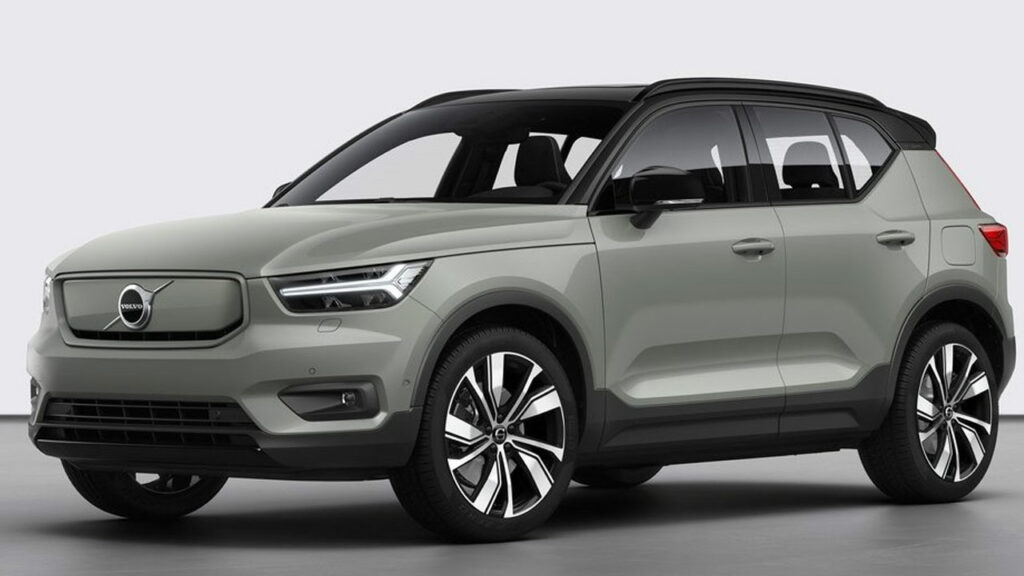
Volvo and sibling Polestar are ramping up their commitment to electrification. The Volvo XC40 Recharge (pure electric) has been the darling of auto reviewers time and time again. Test drivers share a common theme: the XC40 Recharge is a lot more fun to drive than they had expected.
It may look like a family car, but this electric Volvo can launch to 60 mph in just 4.7 seconds as it puts down power via dual electric motors. With 223 miles of range on a charge and up to 150 kW charging speeds at a public fast charger, the XC40 Recharge is just about average for an electric car in 2022. It IS a solid road-tripper, unlike some other options on this list.
Infotainment runs on Google’s Android Auto operating system, much like the popular Polestar 2. An upscale cabin adorned with the elegant and dark-themed interior we’ve come to expect from Volvo features plenty of hidden storage and generous room in the back seat. This electric crossover feels a lot larger than it really is.
Leasing the XC40 Recharge is available for $540 a month with $3,500 down, and 10,000 miles of annual driving allowance. If you’re looking for a peppy electric crossover with a Scandinavian flair, Volvo’s XC40 Recharge just might be the one.
Learn more about the 2022 XC40 Recharge here.

If you’re shopping on a tight budget, don’t overlook the original posterchild of EVs, the Nissan Leaf. A few years before Tesla’s sales ballooned into EV domination, the Leaf was leading electric car sales in America. Why did it fall out of favor? It looks like an appliance, drives like an appliance, can’t make it very far on a charge, and charges slower than most of the competition. But it’s cheap!
With those complaints aside, the Nissan Leaf is still a solid choice for a lease in 2022. We can only recommend the Leaf in the extended range, faster charging versions. That would be the Plus models, which are rated for up to 226 miles on a charge, and can charge at 100 kW charging speeds at a DC fast charger equipped with the CHAdeMO adapter.
The Leaf is not recommended for frequent long-distance travelers. It’s just too much of a pain to stop so frequently and charge for a whole hour once every 180 miles. But for everyone else, the Leaf is a great electric car for around town. Plus, it still qualifies for the EV tax credit.
As of April, the 2022 Nissan Leaf is available for $179 per month for 36 months with $4,179 due at signing. It’s important to note that Nissan keeps the EV tax credit when you lease a Leaf. Regardless, that’s as cheap as it gets to lease a new EV in 2022.
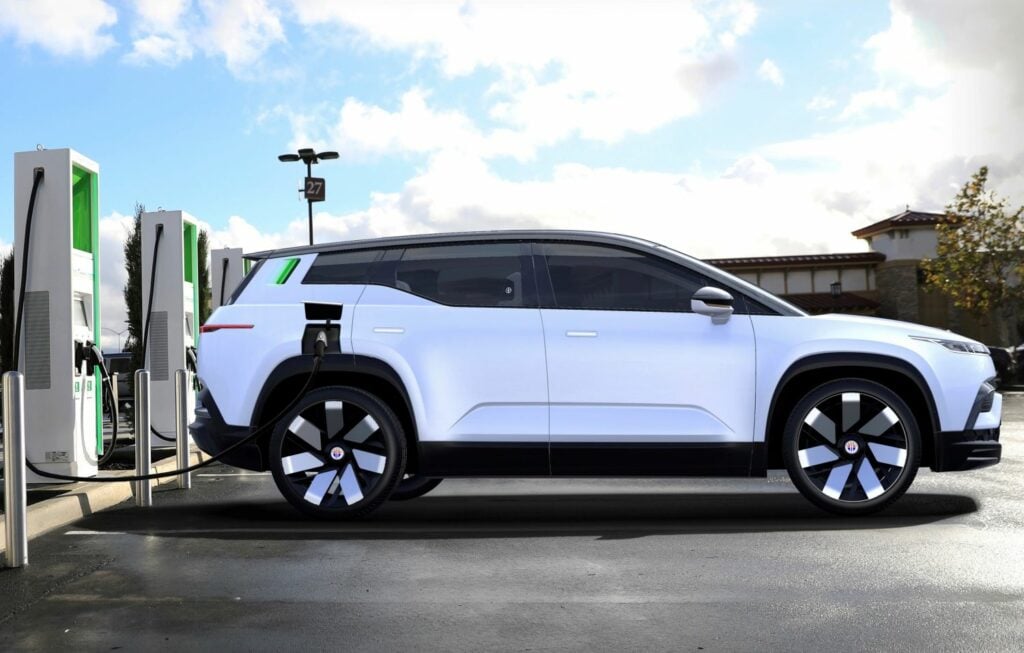
At a time when the average transaction price for a new car is approaching $50,000, a sub-$40,000 electric crossover sounds too good to be true. The Fisker Ocean introduces rare value in the crowded EV segment. We recently shared an in-depth review of the Fisker Ocean.
For just $379 per month, you can lease a Fisker Ocean SUV with the new Fisker Flexee Lease offer. Fisker says that they believe electric vehicles should be affordable to all, and this is how they’re going to try to get there.
With a Fisker Flexee Lease, there are no term limits and you can cancel at any time. It’s basically a long-term rental that appears to be worry-free. After twelve years of leased driving, Fisker will retire and recycle the electric SUV. The Fisker Flexee Lease requires an initial payment of $2,999, and it includes up to 30,000 miles per year. Maintenance is covered.
The Fisker Ocean will be available in very limited quantities late this year. It won’t be until 2023 or even 2024 that a Fisker lease will be easy to come by. Nevertheless, keep it on your radar!